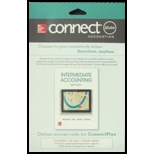
1.
Inventory:
It refers to the current assets that a company expects to sell during the normal course of business operations, the goods that are under process to be completed for future sale, or currently used for producing goods to be sold in the market.
It is a current asset that reflects the amount due from the customers on account of credit sales by the company.
To determine: The amount of accounts receivable that Company I wrote off during 2016.
1.
Explanation of Solution
Determine the amount of accounts receivable that Company I wrote off during 2016.
| Details | Amount (in millions) |
| Beginning Balance | $7 |
| Add: |
$8 |
| Less: Ending balance | ($10) |
| Accounts receivable written off | $5 |
Table (1)
Therefore, the amount of accounts receivable that Company I wrote off during 2016 is $5 million.
2.
To calculate: The amount of cash collected from customers during 2016.
2.
Explanation of Solution
Calculate the amount of cash collected from customers during 2016.
| Details | Amount (in millions) |
| Beginning Balance ($583+$7) | $590 |
| Add: Credit Sales | $6,255 |
| Less: Inventory write-offs (Refer Table 1) | ($5) |
| Less: Ending balance | ($713) |
| Cash collected from customers | $6,127 |
Table (2)
Therefore, the amount of cash collected from customers during 20162016 is $6,127 million.
3.
To calculate: The cost of goods sold that would have been for 2016 if the company had used average cost to value its entire inventory.
3.
Explanation of Solution
If the company had used average cost to value its entire inventory, its cost of goods sold for 2016 would have been lower by $130 million
An increase in beginning inventory increases the cost of goods sold while an increase in ending inventory decreases the cost of goods sold. Since there is an increase in the ending inventory of $130 million, it reduces the cost of goods sold by the same amount. The purchases during the year is not affected due to change in the inventory method.
Thus, the cost of goods sold would decrease to $5,060 million
4.
To calculate: The given ratios for 2016.
4.
Explanation of Solution
Calculation of given ratios as follows:
a) Receivable turnover ratio.
Here,
Sales =$6,255 million
Average accounts receivable =$643 million
Working note:
Determine the average accounts receivable.
b) Inventory turnover ratio
Here,
Cost of goods sold =$5,190 million
Average inventory =$844 million
Working note:
Determine the average inventory.
c) Gross profit ratio.
Here,
Gross Profit =$1,065 million
Net sales =$6,255 million
Working note:
Determine the gross profit
Therefore, the receivable turnover ratio for 2016 is 9.73 times, inventory turnover ratio is 6.15 times, and the gross profit ratio is 17%.
5.
To Explain: the cause of the income generated by the liquidation of LIFO layers and the effect of the liquidation of LIFO layers on cost of goods sold in 2016.
5.
Explanation of Solution
At the time of increasing inventory costs and declining inventory quantities, the LIFO liquidation of the inventory layers purchased at lower costs of the previous years are sold in the current period to match with the current selling prices. Thus, the income generated from this liquidation of inventories is known as LIFO liquidation profit.
In the present case, the LIFO liquidation has decreased the cost of goods sold by $9.23 million (4).
Working note:
Calculate the amount of
Want to see more full solutions like this?
Chapter 8 Solutions
INTERMEDIATE ACCT.-CONNECT PLUS ACCESS
- Please give me correct answer this financial accounting questionarrow_forwardInternal control in a business organization and the reporting of cash on the balance sheet as well as managing receivables and estimating uncollectible accounts is important. What is internal control, and what are the objectives of a well-designed internal control structure in an organization?arrow_forwardCan you please solve this accounting problem?arrow_forward
- I am looking for a step-by-step explanation of this financial accounting problem with correct standards.arrow_forwardI need help with this general accounting question using standard accounting techniques.arrow_forwardCan you help me solve this general accounting problem with the correct methodology?arrow_forward

 AccountingAccountingISBN:9781337272094Author:WARREN, Carl S., Reeve, James M., Duchac, Jonathan E.Publisher:Cengage Learning,
AccountingAccountingISBN:9781337272094Author:WARREN, Carl S., Reeve, James M., Duchac, Jonathan E.Publisher:Cengage Learning, Accounting Information SystemsAccountingISBN:9781337619202Author:Hall, James A.Publisher:Cengage Learning,
Accounting Information SystemsAccountingISBN:9781337619202Author:Hall, James A.Publisher:Cengage Learning, Horngren's Cost Accounting: A Managerial Emphasis...AccountingISBN:9780134475585Author:Srikant M. Datar, Madhav V. RajanPublisher:PEARSON
Horngren's Cost Accounting: A Managerial Emphasis...AccountingISBN:9780134475585Author:Srikant M. Datar, Madhav V. RajanPublisher:PEARSON Intermediate AccountingAccountingISBN:9781259722660Author:J. David Spiceland, Mark W. Nelson, Wayne M ThomasPublisher:McGraw-Hill Education
Intermediate AccountingAccountingISBN:9781259722660Author:J. David Spiceland, Mark W. Nelson, Wayne M ThomasPublisher:McGraw-Hill Education Financial and Managerial AccountingAccountingISBN:9781259726705Author:John J Wild, Ken W. Shaw, Barbara Chiappetta Fundamental Accounting PrinciplesPublisher:McGraw-Hill Education
Financial and Managerial AccountingAccountingISBN:9781259726705Author:John J Wild, Ken W. Shaw, Barbara Chiappetta Fundamental Accounting PrinciplesPublisher:McGraw-Hill Education





